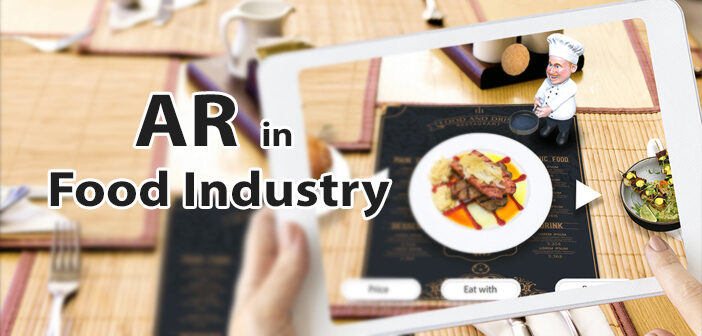It turned numerous eyes when back in the day Carlos Banks remarked that,
‘I will not be impressed with technology until I can download food from the internet.’
But the way Augmented Reality has emerged; there might just come a day when this might even become possible.
Every person on the planet is different and unique in their own way. But one thing that’s common to us all is our love for food.
‘To eat’, as Francois Rochefoucauld says, ‘is a necessity, but to eat intelligently is an art.’
With everything around the world changing and developing, growing and enhancing, it is only fitting to see the food and beverage industry getting the much-needed tech boost.
Introduction:
The AR tool can be used for dine-in, visualising dishes, packaging, delivery services and several other ways to engage the customer and grab their attention. Another plus point for AR is the broad scope that it offers for enhancing relationships with customers.
AR is changing things for the better, from how the food is prepared to customer feedback, from employee training to interact with customers. It is one of the upcoming and more significant parts of the modern-day food industry and can be the real game-changer in the market.
6 Ways Augmented Reality Is Transforming the Food and Dining Experience:
- Attractive Food Menu: The menu is one of the first things a customer sees in a restaurant. It is the first source of interaction between the customer and the restaurant. The menu holds not only what the restaurant serves in terms of food but also what it has to offer over and beyond the eatables.
By using food menus powered by AR, restaurants can easily attract the customer’s attention and interact and engage with them at an entirely new level. - Staff Training: Taking a leaf out of someone’s book, as they say, the food industry can also use AR for staff training to train their employees in a much more effective and efficient manner. This AR-driven training would ensure attention-to-detail and easy to understand training modules, thus making the learning experience much smoother and more manageable. With better results and much less cost, AR can answer all the problems related to staff training in the food industry.
- Customisable Orders: Using AR in food also allows the customer to customise and create the food as per their taste. It provides them with a wide variety of choices from the ingredients to their quantities and how they would like them to be cooked.
This can be the central attraction point for a restaurant as it can give the customer a chance to get personalised orders, enticing them to come back every now and then. - Removes Language Barrier, Attracts More New Customers: The AR-based app is helpful in many terms. One of the main benefits is that it can remove the language barrier and let all types of customers connect with the restaurant, no matter what language they are comfortable in. Apart from that, the restaurant can also include nutrition information, and it will help enhance the customers’ engagement. Customers can find food based on their taste and feel more at home.
- Keep Customers Engaged with AR-based Games: Another major attraction that AR has created in the food industry is the table-top menu approach. While the customer is sitting at the table, say waiting for the food, an engaging AR-based game is something that would allow the customer to stop thinking about food for a moment and have some fun as we all know, how tough it gets to wait for that delicious food to arrive. All these games can even be used to ensure customer loyalty; various offers, coupons and vouchers can be rewarded for playing the game that the customer is bound to grab with both hands.
- Advertising for Restaurants: As we all know, no matter how good a product is (food in this case), unless and until it is backed by good advertising, it becomes difficult to get the desired reach. This advertising campaign can be enhanced by using augmented reality.
It can very well act as fuel in the fire, and with the help of this catalyst, the advert can reach a much wider audience.
Conclusion:
Augmented Reality has already taken the food and dining experience on a much higher level. From customising the food as per your taste to seeing how it is made, AR has changed how people perceive dining. The unlimited potential of this future immersive tech is more than enough to transform the food industry’s fortune completely. Enhanced customer experience, improved employee productivity and above all, prime customer satisfaction are some of the things that makes AR the ideal fit for the industry.
The growing popularity of AR can only mean one thing – people demanding more and more of it in the upcoming times.
After going through the current Augmented Reality trends in the food and beverages industry, we can safely say that AR is the future.

